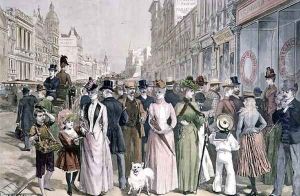Wilson, Thomas Walter Paintings
Thomas Walter Wilson was a British artist known for his distinctive style and contribution to art during the mid-20th century. Born in 1912 in the United Kingdom, he grew up in an era of significant change that influenced the evolution of art in Europe. Wilson's early life and education in the arts laid the groundwork for his unique approach to painting and sculpture.
Wilson's artistic journey began with his studies at local art schools, where he was exposed to various art movements such as Modernism and Post-Impressionism. Throughout the 1930s and 1940s, he developed his technique, which was characterized by a bold use of color and form. During World War II, like many artists of the time, Wilson's work was impacted by the events around him, and some of his pieces from this period reflect the tumultuous atmosphere of wartime Britain.
After the war, Wilson's art evolved further as he began to experiment with abstract expressionism. He was particularly interested in the emotional and psychological aspects of color and shape, which is evident in his later works. In the 1950s and 1960s, Wilson became more recognized in the British art scene and participated in several exhibitions, both solo and group shows.
Wilson's contribution to art was not only through his paintings but also through his role as an educator. He taught at various art institutions, inspiring a new generation of artists with his innovative techniques and passion for creativity. His influence extended beyond the classroom as he also wrote about art theory, contributing to the discourse on contemporary art practices.
Wilson continued to create art into his later years, with his style constantly evolving. He never confined himself to one medium or approach, which kept his work fresh and relevant. Thomas Walter Wilson passed away in 2001, leaving behind a legacy that has since been celebrated in retrospectives and collections that showcase his role in shaping British art in the 20th century. His works are held in numerous public and private collections, attesting to their enduring appeal and the respect he garnered from art enthusiasts and critics alike.
